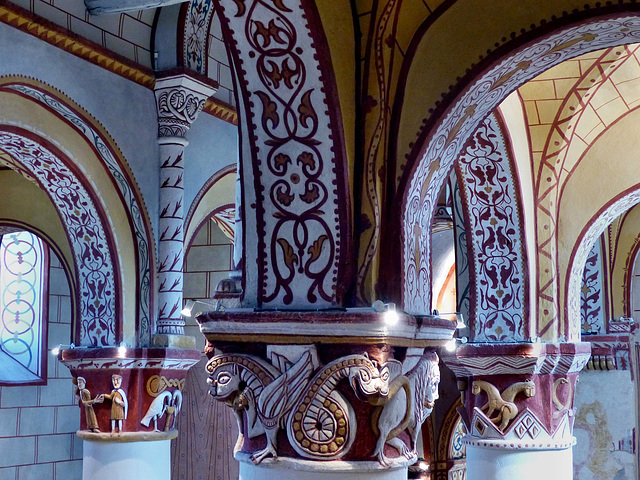Civaux - Saint Gervais et Saint Protais
Civaux - Saint Gervais et Saint Protais
Civaux - Saint Gervais et Saint Protais
Civaux - Saint Gervais et Saint Protais
Civaux - Saint Gervais et Saint Protais
Civaux - Saint Gervais et Saint Protais
Civaux - Saint Gervais et Saint Protais
Civaux - Saint Gervais et Saint Protais
Civaux - Saint Gervais et Saint Protais
Civaux - Saint Gervais et Saint Protais
Civaux - Saint Gervais et Saint Protais
Civaux - Necropolis
Civaux - Necropolis
Civaux - Necropolis
Civaux - Necropolis
Civaux - Necropolis
Saint-Aignan - Saint-Aignan
Saint-Aignan - Saint-Aignan
Saint-Aignan - Saint-Aignan
Saint-Aignan - Saint-Aignan
Saint-Aignan - Saint-Aignan
Saint-Aignan - Saint-Aignan
Saint-Aignan - Saint-Aignan
Civaux - Saint Gervais et Saint Protais
Civaux - Saint Gervais et Saint Protais
Civaux - Saint Gervais et Saint Protais
Civaux - Museum
Civaux - Museum
Civaux - Museum
Civaux - Saint Gervais et Saint Protais
Spring - Horse Chestnut
Valdivienne - Notre Dame de Morthemer
Valdivienne - Notre Dame de Morthemer
Valdivienne - Notre Dame de Morthemer
Valdivienne - Notre Dame de Morthemer
Valdivienne - Notre Dame de Morthemer
Valdivienne - Notre Dame de Morthemer
Valdivienne - Notre Dame de Morthemer
Saint-Pierre-les-Églises
Poitiers - Pharmacie Carnot
Poitiers - Alain Boutin
Poitiers - Art Nouveau
Poitiers - Hotel de Ville
Poitiers - Saint-Hilaire le Grand
Poitiers - Saint-Hilaire le Grand
Location
Lat, Lng:
You can copy the above to your favourite mapping app.
Address: unknown
You can copy the above to your favourite mapping app.
Address: unknown
See also...
Keywords
Authorizations, license
-
Visible by: Everyone -
All rights reserved
-
303 visits
Civaux - Saint Gervais et Saint Protais


Civaux, a village with a population of about 1000, has a history rooting very deep. Humans populated the area already, when stepp bisons and mammoths were hunted. Many "pre-historic" artefacts have been excavated in and around Civaux, proving that this place was inhabited over tens of thousands of years.
A settlement stood on the site of the village in Gallo-Roman times, and there are still traces of Roman temples. Excavations have revealed the sites of a theater (capacity 3000), a fortified camp, and the foundations of many villas.
This has been a place of very early christianisation. A funeral stele has been found dating to around 400, a pagan temple and a very early baptisterium were excavated next to the church. A polygonal apse was probably built as will around 400, what actually means that this church, dedicated to Saint Gervais and Saint Protais is one of the oldest in France.
At that time a kind of pilgrimage must have developed. The relics of Saint Gervais and Saint Protais had been miraculously discovered by Saint Ambrose in Milan in 386, so the saints got very popular in Merovingian times, but that does not explain the enigma of Civaux. The village stands in the center of a huge merovingian necropolis.
As many sarcophagi were sold as water basins or troughs in later time, the exact number of graves is unknown. Serious estimations are between 15.000 and 20.000 graves.
There are parallels to nearby Saint Pierre in Cauvigny (16 kms north). The same colours as in Chauvigny were used here during the restauration of the interior. At least one of the capitals is very similar to one in Saint Pierre, but some carvings are absolutely unique. The nave dates back to the 11th century, the apse more than 600 years older.
Thanks to the friendly lady from the Archaeological Museum I could take photos from the gallery of the church. Merci beaucoup!
A couple of mythical beasts of hell, devouring souls are in the foreground.
www.tourisme-vienne.com/en/activite/88/musee-archeologique
A settlement stood on the site of the village in Gallo-Roman times, and there are still traces of Roman temples. Excavations have revealed the sites of a theater (capacity 3000), a fortified camp, and the foundations of many villas.
This has been a place of very early christianisation. A funeral stele has been found dating to around 400, a pagan temple and a very early baptisterium were excavated next to the church. A polygonal apse was probably built as will around 400, what actually means that this church, dedicated to Saint Gervais and Saint Protais is one of the oldest in France.
At that time a kind of pilgrimage must have developed. The relics of Saint Gervais and Saint Protais had been miraculously discovered by Saint Ambrose in Milan in 386, so the saints got very popular in Merovingian times, but that does not explain the enigma of Civaux. The village stands in the center of a huge merovingian necropolis.
As many sarcophagi were sold as water basins or troughs in later time, the exact number of graves is unknown. Serious estimations are between 15.000 and 20.000 graves.
There are parallels to nearby Saint Pierre in Cauvigny (16 kms north). The same colours as in Chauvigny were used here during the restauration of the interior. At least one of the capitals is very similar to one in Saint Pierre, but some carvings are absolutely unique. The nave dates back to the 11th century, the apse more than 600 years older.
Thanks to the friendly lady from the Archaeological Museum I could take photos from the gallery of the church. Merci beaucoup!
A couple of mythical beasts of hell, devouring souls are in the foreground.
www.tourisme-vienne.com/en/activite/88/musee-archeologique
(deleted account) has particularly liked this photo
- Keyboard shortcuts:
Jump to top
RSS feed- Latest comments - Subscribe to the comment feeds of this photo
- ipernity © 2007-2025
- Help & Contact
|
Club news
|
About ipernity
|
History |
ipernity Club & Prices |
Guide of good conduct
Donate | Group guidelines | Privacy policy | Terms of use | Statutes | In memoria -
Facebook
Twitter

Sign-in to write a comment.